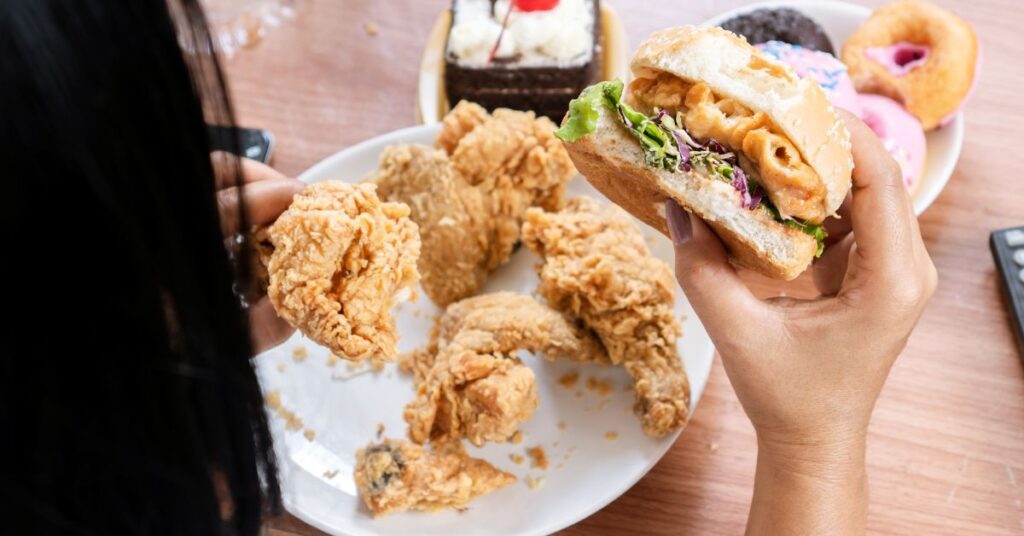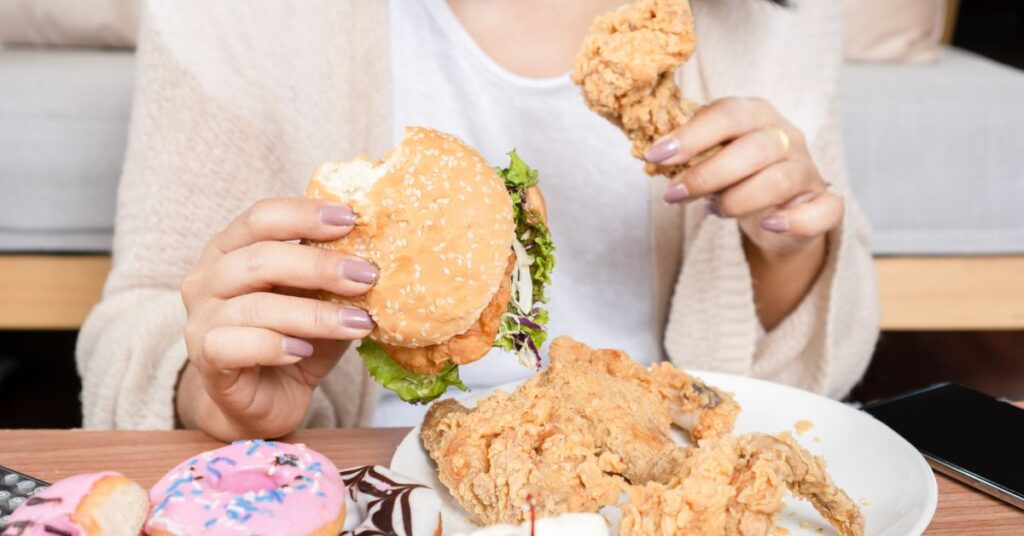In today’s world, where diet culture and body image concerns often take center stage, it’s crucial to have a clear understanding of eating disorders. Two terms that frequently come up in conversations are bulimia and binge eating, but what sets them apart? You’ve come to the right site if you’ve ever been interested in the subtle differences between these two illnesses.
Recurrent periods of excessive overeating are referred to as binges. Those affected often experience intense feelings of guilt, shame, or distress, accompanied by a perceived lack of control. It’s a complex issue that warrants closer examination. On the other hand, bulimia nervosa shares similarities with binge eating disorder but introduces additional elements into the equation.
In this article, we’ll embark on a journey of discovery to unravel the differences between bulimia and binge eating. Whether you have a personal interest in the topic or simply want to broaden your knowledge, our aim is to provide you with a compassionate and informative overview.
Contents
What Is Bulimia Nervosa?


Bulimia Nervosa is a complex psychological disorder characterized by a troubled relationship with food and body image. People with this illness have a distorted perception of their physical shape and weight, leading to a relentless cycle of binge eating, followed by purging or compensatory behaviors. These behaviors often manifest as self-induced vomiting, abusing laxatives or diuretics, and excessive exercise. However, some individuals resort to non-purging compensatory measures like strict dieting or fasting. The disorder affects not only physical health but also mental well-being, contributing to feelings of inadequacy, low self-esteem, and a distorted sense of self-worth.
What Is Binge Eating Disorder?


Binge Eating Disorder is a psychological condition characterized by recurrent episodes of consuming large quantities of food, accompanied by a sense of loss of control. It goes beyond occasional overeating and can significantly impact a person’s life. People with this disorder often turn to overeating as a way to cope with distressing emotions such as stress or loneliness, but afterward, they experience guilt and shame. Binge Eating Disorder affects not only food and body image but also various aspects of a person’s well-being. Psychological distress, low self-esteem, and preoccupation with body weight and shape are also significant indicators. Treatment for Binge Eating Disorder involves a comprehensive approach, including psychotherapy, such as cognitive-behavioral therapy (CBT), to address emotional triggers, develop healthier coping strategies, and challenge negative thoughts. Nutritional counseling and support groups can also play a valuable role in promoting sustainable lifestyle changes and providing a sense of community.
Comparing Bulimia and Binge Eating
Bulimia and Binge Eating are two eating disorders that share similarities but also have distinct characteristics. In bulimia, binge eating cycles are followed by coping mechanisms including excessive activity or vomiting. In contrast, Binge Eating Disorder (BED) involves recurrent episodes of excessive food consumption without compensatory actions. While both disorders involve recurrent overeating, the key difference lies in compensatory behaviors. The emergence of these illnesses is significantly influenced by psychological and behavioral factors. Their development is influenced by emotional problems such as low self-esteem, anxiety, sadness, and body dissatisfaction. Societal pressures and a complex relationship with food can also increase the risk. Accurate diagnosis of bulimia and BED requires a thorough evaluation by mental health professionals, considering standardized assessments, clinical interviews, and patient histories.
For more information Check out: Win Win Food Delicious Healthy Eating for No Fuss Lovers
How Many Calories Counts as a Binge?
Bingeing is a complex territory, and it is important to grasp its nuances. When we take calorie consumption to extremes, it can have significant consequences. Thus, determining the caloric benchmark that distinguishes a mere indulgence from a full-on binge becomes crucial.
1. It’s Not One Size Fits All
Several variables come into play when defining the caloric threshold for a binge. Our individual metabolic rates, body composition, and physical activity levels all contribute to this complex equation. We are all unique, and these variables make it impossible to establish a universal rule.
2. The Importance of Balance
When it comes to identifying a binge, context matters. A surplus of calories within the framework of a balanced diet may not necessarily be classified as a binge. However, when an irregular spike in caloric intake disrupts the overall equilibrium, the line between indulgence and excess becomes blurred.
3. Quantifying a Binge
Pinpointing the exact numerical value that constitutes a binge remains challenging due to the intricacies of our individual physiologies. While the threshold can vary, health professionals generally consider an intake of over 1,000 to 1,500 calories within a short duration as a significant deviation from the norm.
While there may not be a concrete answer to the question of how many calories constitute a binge, understanding the influence of various factors empowers us to navigate this complex terrain. By recognizing the interplay between physiological and psychological realms, we can promote a balanced approach to nutrition and overall well-being.
Conclusion
Bulimia nervosa and binge eating disorder are distinct eating disorders that share similarities but also have unique characteristics. Bulimia involves cycles of binge eating followed by purging or compensatory behaviors, while recurrent episodes of excessive food consumption characterize binge eating disorder without compensatory actions. Both disorders can have severe physical and mental health consequences, emphasizing the need for accurate diagnosis and comprehensive treatment approaches that address the underlying psychological and behavioral factors contributing to their development. Determining the exact caloric threshold for a binge is challenging due to individual variations in metabolism, body composition, and physical activity levels. While there is no universal rule, health professionals generally consider an intake of over 1,000 to 1,500 calories within a short duration as a significant deviation from the norm. However, it’s important to consider context and overall dietary balance when identifying a binge, as a surplus of calories within a balanced diet may not necessarily qualify as excessive.







